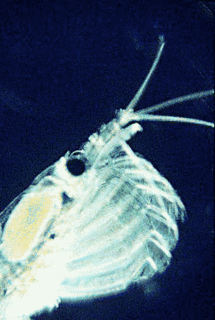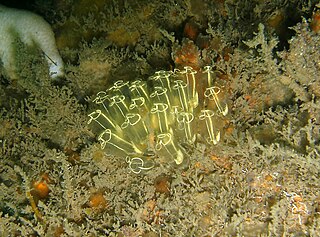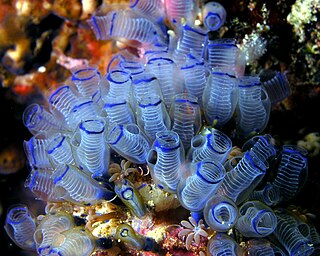| Clavelina sabbadini | |
|---|---|
 | |
| Scientific classification | |
| Kingdom: | Animalia |
| Phylum: | Chordata |
| Subphylum: | Tunicata |
| Class: | Ascidiacea |
| Order: | Aplousobranchia |
| Family: | Clavelinidae |
| Genus: | Clavelina |
| Species: | C. sabbadini (Brunetti, 1987) [1] |
| Binomial name | |
| Clavelina sabbadini | |
Clavelina sabbadini is a species of tunicate (sea squirt), in the genus Clavelina (the "little bottles"). Like all ascidians, these sessile animals are filter feeders.

A tunicate is a marine invertebrate animal, a member of the subphylum Tunicata. It is part of the Chordata, a phylum which includes all animals with dorsal nerve cords and notochords. The subphylum was at one time called Urochordata, and the term urochordates is still sometimes used for these animals. They are the only chordates that have lost their myomeric segmentation, with the possible exception of the seriation of the gill slits.

Ascidiacea is a paraphyletic class in the subphylum Tunicata of sac-like marine invertebrate filter feeders. Ascidians are characterized by a tough outer "tunic" made of the polysaccharide cellulose.

Filter feeders are a sub-group of suspension feeding animals that feed by straining suspended matter and food particles from water, typically by passing the water over a specialized filtering structure. Some animals that use this method of feeding are clams, krill, sponges, baleen whales, and many fish. Some birds, such as flamingos and certain species of duck, are also filter feeders. Filter feeders can play an important role in clarifying water, and are therefore considered ecosystem engineers. They are also important in bioaccumulation and, as a result, as indicator organisms.









